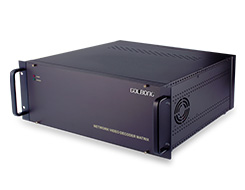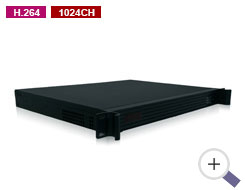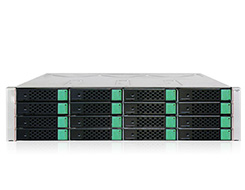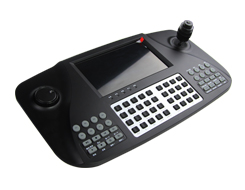Deploy CCTV system between chain stores and headquarter.
What is the difference when there is monitoring center in the headquarters? The basic IP cameras and DVR/NVR solution is popular in the retail, convenient stores, restaurants today. Simple connect the cameras and recorders, attached a monitors, the system is almost ready to go. However, if the headquarter would like to monitor all those chain stores, the basic camera NVR system properly can't deliver. Normally the NVR require static IP connection to the cameras on the each stores. Unless there is dedicated network, it is luxury to have static IP in each store. There is also no "center" concept in basic IP cameras and NVR system. The NVR never talk to each other. People may consider client management software (CMS).

The CMS is connecting to each IP camera as a client. The IP cameras are acting as server. It is effective when connection is small, like 32-channel 64-channel. However, when the connections increase, especially the IP cameras stay in different network in chain stores. The connection will become very vulnerable. The CMS need to initial the connections to different network which make the system easy to get crash. What is the solution here? We exchange the rule both side. The center plays as server on the contrary. Let the cameras in each store to connect back to the server in headquarters. Both static IP issue and reliability issue will be settled with this new rule. One of important function to implement this new rule is auto register. The IP cameras in the chain store have to auto register to the server in centers. This is similar as P2P connection, but not P2P. The P2P requires independent servers online to cooperate the connection both side. In the auto register, the cameras only need to know the server's IP in headquarters. We don't even need to modify any setting on the router in each chain store, such as port forwarding. After we set the center's IP to the cameras, those devices can find the server automatically.

In the platform server structure, the NVR and recorder still can be deployed in each chain store as local storage. We just need DVR/NVR with auto register function. the operator not only can playback the footage on each store but also monitor the device status, alarm message from the center. One of typical scenario is BTS room monitoring. The telecom company has over 2000 BTS room on site. Each room has a recorder connecting to several sensors. All these recorders auto register the platform server in center. Once the alarm is triggered, the centers will receive the notification, the operator can view the live or playback video a few minutes ago immediately.

If the bandwidth is good between chain stores and headquarter, we also can deploy network storage device at the centers working as primary recording or backup recording.

The next thing is video wall setup. The simple solution will be the video wall controller. The video wall controller either can connect the camera NVR directly in each store if the network is good enough with static IP or get the video stream from the video management server. The benefit of receiving the video streaming from the server instead of connecting each device in chain store, it will not increase the bandwidth loading in the center. The video will arrive at the server, re-generate, and pass to the video wall.

In some special application like kindergarten project, we may need to authorize each parent to see the camera relative to their child's classroom only. The video management server allow operator to create account for each parents in the video center, assign the cameras relative to their child's classroom. When the parents login the app on smart phone, they only can see the specific camera online. The basic camera and NVR can't make this job done. Yes, P2P connection allows parents to login those cameras directly, but in this way, it has no access control to each the cameras. Once too many parents are trying to watch the same classroom, the camera will be overload and get crash. With video management server, the parents actually didn't get the video stream from the cameras. They receive the video from the server room over video management server. The server is managing the resource to each connection from the parents.

In the middle or large system, it requires more flexible, reliable system design rather than basic camera NVR system. With platform server we can even distributed-deploy the system in different city and monitor the all the device in headquarters, typical application like the police office project.





